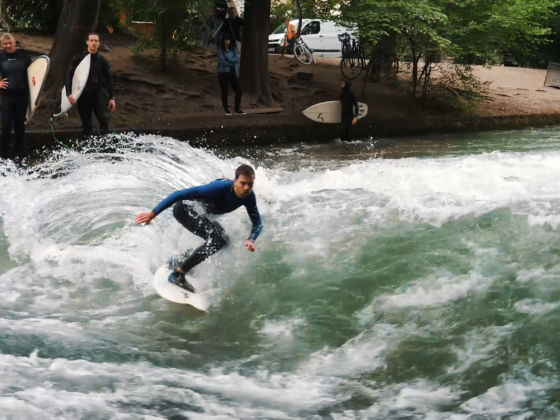Munich, Germany — the heart of Bavaria — is hundreds of miles from the nearest ocean surf break. Yet, even here, surfers find a way to quench their need for waves.
They ride a standing wave on the Eisbach, a man-made river that runs through Munich’s Englischer Garten, one of the world’s largest urban parks. The Eisbach, or “ice brook,” is just over a mile long, fast-moving, and cold. Surfers first discovered the Eisbach wave in 1972. Surfing it is dangerous and, for nearly 40 years, it was also illegal.
